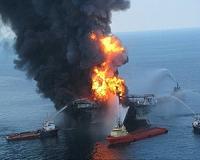| . |  |
. |
Beijing (UPI) Apr 29, 2010 Blue jeans are partly to blame for the pollution of China's Pearl River. Xintang, situated in the northeastern part of the Pearl River Delta, is known as the "jeans capital" of the world. Some 200 million pairs of jeans are made there each year for 1,000 different labels, as one of its manufacturer's Web site claims. But the typical jean dyeing process involves the release of tons of waste water, which is a mixture of dye, bleach and detergent. Factory manager Li Zhongquan at the Jinxin dyeing plant in Xintang told CNN most of the waste water is recycled. "If we didn't pay attention to the environment, the Communist Party would shut us down," Li said. Later, however, he admitted that some of the plant's waste water gets discharged, saying he didn't know where it goes. The pipes on the edge of the factory that lead directly into the Pearl River seem a likely possibility. "Of course we know what's in the pipes, every factory is supposed to register, but there are so many," said Wu Xuewei, deputy director of the Guangzhou Water Resources Bureau, responsible for the Pearl. Denim scraps are visible in the trash piled along the riverbanks adjacent to Xintang's blue jean factories and satellite images indicate a blackened Pearl River alongside the factories. The 1,400-mile Pearl River is China's third largest. Known as the "world's factory floor," more than 30 percent of China's exports -- ranging from toys to electronics to textiles -- were manufactured in the Pearl River Delta in 2007. Greenpeace China's "Poisoning the Pearl" report last October stated that gaps in China's pollution laws are allowing factories to empty "a toxic cocktail of chemicals into a river that provides water to 47 million people." In studying 25 samples from manufacturing facilities' discharge points into the Pearl River for the study, Greenpeace said it found heavy metals including beryllium, a known carcinogen; manganese, which has been linked to brain damage; alkyl phenols which disrupts hormones and a number of hazardous organic chemicals. "What is very disturbing is that once released, it is almost impossible to remove these hazardous substances from the environment," said Dr. Kevin Brigden, a scientist at the Greenpeace Research Laboratories at the University of Exeter in England. "These substances, which are associated with a long list of health problems such as cancer, endocrine disruption, kidney failure and impact to the nervous system, pollute the environment and put people's health at risk."
Share This Article With Planet Earth
Related Links Our Polluted World and Cleaning It Up
 Political shockwaves grow from US oil rig disaster
Political shockwaves grow from US oil rig disasterWashington (AFP) April 28, 2010 Fears the United States may be facing one of the worst oil slick disasters in its history threatened to whip up a new political squall Wednesday, at a critical moment for a Democratic climate bill. President Barack Obama dismayed some supporters and environmental groups when he announced in March that his administration would explore lifting bans on offshore drilling in certain waters in a w ... read more |
|
| The content herein, unless otherwise known to be public domain, are Copyright 1995-2010 - SpaceDaily. AFP and UPI Wire Stories are copyright Agence France-Presse and United Press International. ESA Portal Reports are copyright European Space Agency. All NASA sourced material is public domain. Additional copyrights may apply in whole or part to other bona fide parties. Advertising does not imply endorsement,agreement or approval of any opinions, statements or information provided by SpaceDaily on any Web page published or hosted by SpaceDaily. Privacy Statement |